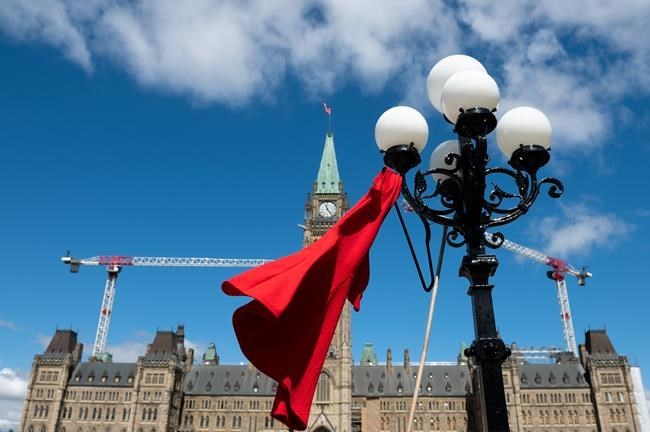OTTAWA — Canada and Manitoba are partnering to launch an alert system that would inform the public when an Indigenous woman or girl goes missing, they announced Friday in Winnipeg, ahead of a national day to mark the crisis.
The long-awaited Red Dress Alert system is a bid to prevent deaths and increase safe reunions with loved ones.¬Ý
Statistics Canada concluded in a report last year that the homicide rate for Indigenous women and girls was six times higher than the rate for their non-Indigenous counterparts.¬Ý
A national inquiry concluded five years ago that they are 12 times more likely to go missing or murdered.
"This is a historic moment, and a major step toward ending the crisis of missing and murdered Indigenous women, girls and gender-diverse peoples," said NDP MP Leah Gazan, who has led federal advocacy on the alert.
"And while we celebrate this historic moment, it is critical to remember that we are not done until a Red Dress Alert is no longer needed."
The Manitoba pilot is to be designed with and led by Indigenous Peoples, and is expected to help inform an eventual national alert system.¬Ý
It will be funded through moneys set aside in this year's federal and provincial budgets.¬Ý
Nahanni Fontaine, Manitoba's minister for women and gender equity, said she has heard from community members who believe the alert system could help reduce risk for Indigenous women and girls.¬Ý
"We look forward to working inclusively with Indigenous partners in Manitoba to find the best path forward as we build this pilot project."
Crown-Indigenous Relations Minister Gary Anandasangaree said Winnipeg — and Manitoba writ large — is the epicentre of the crisis, and launching the Red Dress Alert there will bring forward solutions that can be implemented across the country.
"It's not the only solution, but it's a critical starting point for us to address the immediate crisis that exists."
Gazan's efforts on the file led a House of Commons committee to study the prospect for a national alert system.
Her fellow MPs unanimously backed her motion in the House of Commons last year declaring the deaths and disappearances of Indigenous women and girls a Canada-wide emergency.¬Ý
The motion also called on the federal government to fund a new alert system that would operate much like Amber Alerts.¬Ý
Other North American jurisdictions already have similar alert systems, including Washington state's Missing Indigenous Person system.
The national inquiry's 2019 final report found deliberate rights violations were at the heart of violence against Indigenous women, girls and gender-diverse people.
With the final report came 231 calls to justice directed toward governments, social service providers, industry and 91‘≠¥¥s, but relatively little progress has been made to date.
Sheila North, former grand chief of Manitoba Keewatinowi Okimakanak and an ex-journalist, has been a vocal advocate in ending violence against Indigenous women.
She said that while news of an alert system is welcome, she hopes expectations are kept reasonable — at least for now.
"There's going to be bumps in the road — there's going to be challenges that maybe none of us see right now," she said. "Inevitably, someone is going to be disappointed."
But it's the starting point that matters, she said. "I think it's high time."
To those who may not see the value in an alert system for Indigenous women, North said people of that identity have been shut out of many parts of society "for so long," and the deaths "are a result of it."
The House of Commons committee studying the alert has heard testimony from experts who stress any system should be Indigenous-led.
That's in part to mitigate the problems of police inaction and bureaucratic red tape, so that members of the public are notified of a disappearance promptly and efficiently.
Jennifer Jesty, who serves as the resiliency manager for the Union of Nova Scotia Mi'kmaq, spoke to MPs about her own efforts to get an emergency alert system running for her communities and attempts to minimize police interference.
Since September 2020, Jesty told the committee in late March that she sent out 183 alerts and reunited 67 people with their families as a result — the vast majority of whom were brought back together with their families within an hour of the alert going out.
"Because this system was designed by us, for us, we were able to create our own protocols around when, how and why an alert should or shouldn’t be sent," Jesty said.
"There has not been one single request for an alert that has been denied, and every single alert has been sent out within minutes of receiving the information."
This report by The 91‘≠¥¥ Press was first published May 3, 2024.
— With files from Brittany Hobson in Winnipeg.
Alessia Passafiume, The 91‘≠¥¥ Press



